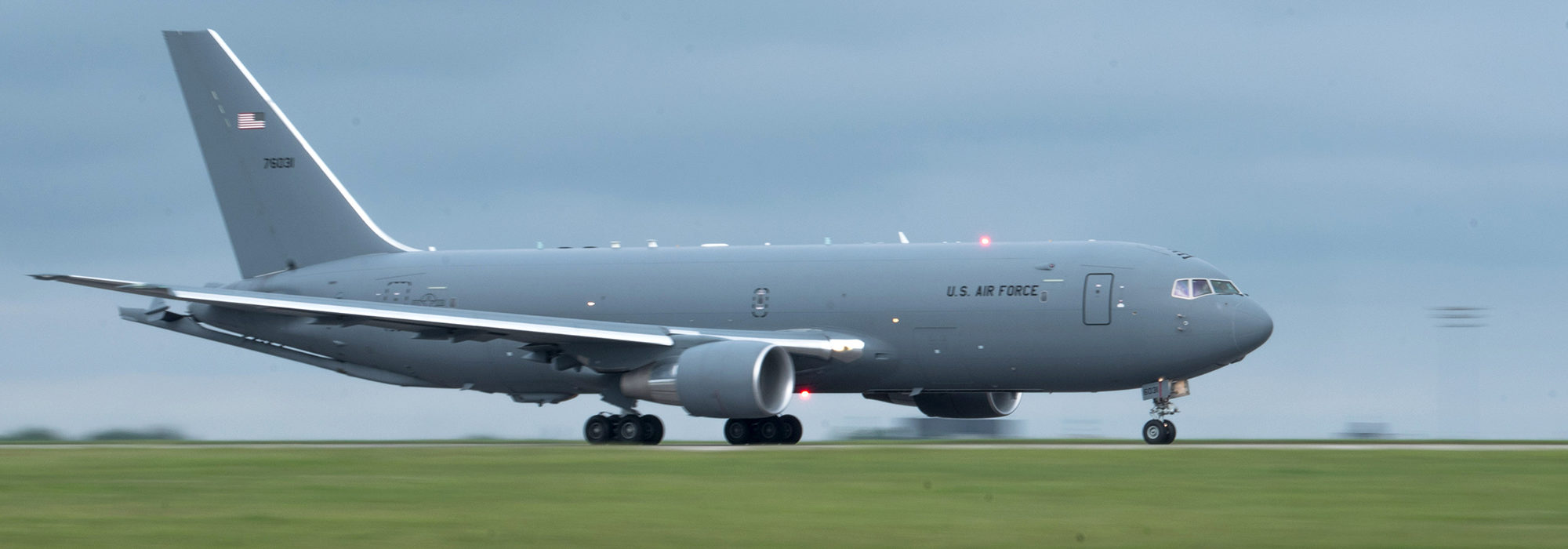Lessons from the KC-46 and F-35 will prove useful to the testing community in the years to come, according to Nickolas Guertin, nominated to become director of operational test and evaluation at the Pentagon.
The Air Force is dealing with six Category 1 deficiencies in the KC-46 tanker and seven in the F-35 fighter and both aircraft prompted concerns from lawmakers during a confirmation hearing at which Guertin was among a slate of nominees called before the Senate Armed Services Committee.
For the tanker, the most prominent issue remains the troubled Remote Vision System’s (RVS’s) camera, which distorts and, in some light, obscures the boom operator’s view. Boeing, the tanker’s maker, is developing a new system, RVS 2.0, with the goal of putting it in planes starting in late 2023.
Asked by Sen. Jeanne Shaheen (D-N.H.) to pledge that he would keep testing and evaluation on schedule for RVS 2.0, Guertin said he would—and pointed to a key area where previous testing for the tanker had fallen short: “It’s especially important that the systems are tested the way they will be operated operationally, and to have those things come out as a part of fielding them is not the time we want to discover those problems.”
In October, Air Mobility Command (AMC) boss Gen. Mike Minihan cleared the KC-46 to refuel F-15s and F-16s, a major milestone. That means 62 percent of aircraft that “request air refueling support” from U.S. Transportation Command can now be refueled by the Pegasus tanker, AMC said.
Minihan’s order was the third “interim capability release (ICR)” for the Pegasus since July, paving the way for increased refueling duties for a tanker that had been limited largely to transport duty until earlier this year.
The Air Force is still gauging whether refueling the F-22 and F-35 fighters and the B-2 bomber from the Pegasus is safe. Because of RVS problems, KC-46 booms have previously damaged the sensitive stealth skins of those aircraft during testing.
“There is no timeline associated with the overall ICR plan,” AMC said in its statement, referring to the interim capability release. Rather, aircraft are being cleared to refuel from the KC-46 when it’s deemed safe to do so.
USAF’s plan “focuses on establishing incremental confidence measures” to “quantitatively and qualitatively” assess the aircraft’s “achievements at ICR milestones,” AMC said. Crews flying the KC-46 will continue to “fly training, exercise, and demonstration missions until all operational confidence measures are met.”
The F-35, meanwhile, is also culling its list of critical deficiencies, having dropped the number to seven from 13 in 2019. The exact nature of the most have not been publicly disclosed, but Guertin hinted Oct. 19 that the complexity of the stealth fighter’s systems made it such that real-world testing is sometimes a challenge.
“One of the things we need to be thinking about as we move forward into the future is a tighter alignment between modeling complex systems like the F-35—it’s got a lot going on under the hood,” Guertin told Sen. Mark Kelly (D-Ariz.). “Some things you’re not going to be able to test operationally all at the same time in a threat-representative environment. So we need to be thinking about how we combine modeling and simulation of those environments with applied physical testing.”
The Air Force has used “digital twins” in the recent past to simulate tests and shorten the development and testing time needed to field a system. Acting Air Force acquisition boss Darlene Costello said in July that the goal is to require physical tests only for the things that most require it.
Guertin agreed, writing in response to Senate questions that “digital technology, including strategic use of modeling and simulation, should be used much more frequently.”
However, there are limitations to digital modeling and simulation, Guertin wrote, noting that realistic simulation requires accurate and reliable real-life data. “The early costs of [modeling and simulation] may be high,” he wrote, “but it produces significant dividends in testing of the follow-on iterations of a system or a similar system.”
As the Air Force proceeds with development of the Next-Generation Air Dominance platform, officials have already used digital methods to design the planned sixth-generation fighter. And when it comes time for testing and evaluation, Guertin said that the F-35 has been a “great use case” to build upon.
“We need to be taking full advantage of the lessons, both good and bad, in how we position ourselves in the future for taking advantage of those kinds of technologies as we build up these more and more complex systems, as we move further forward into the future,” he said.

